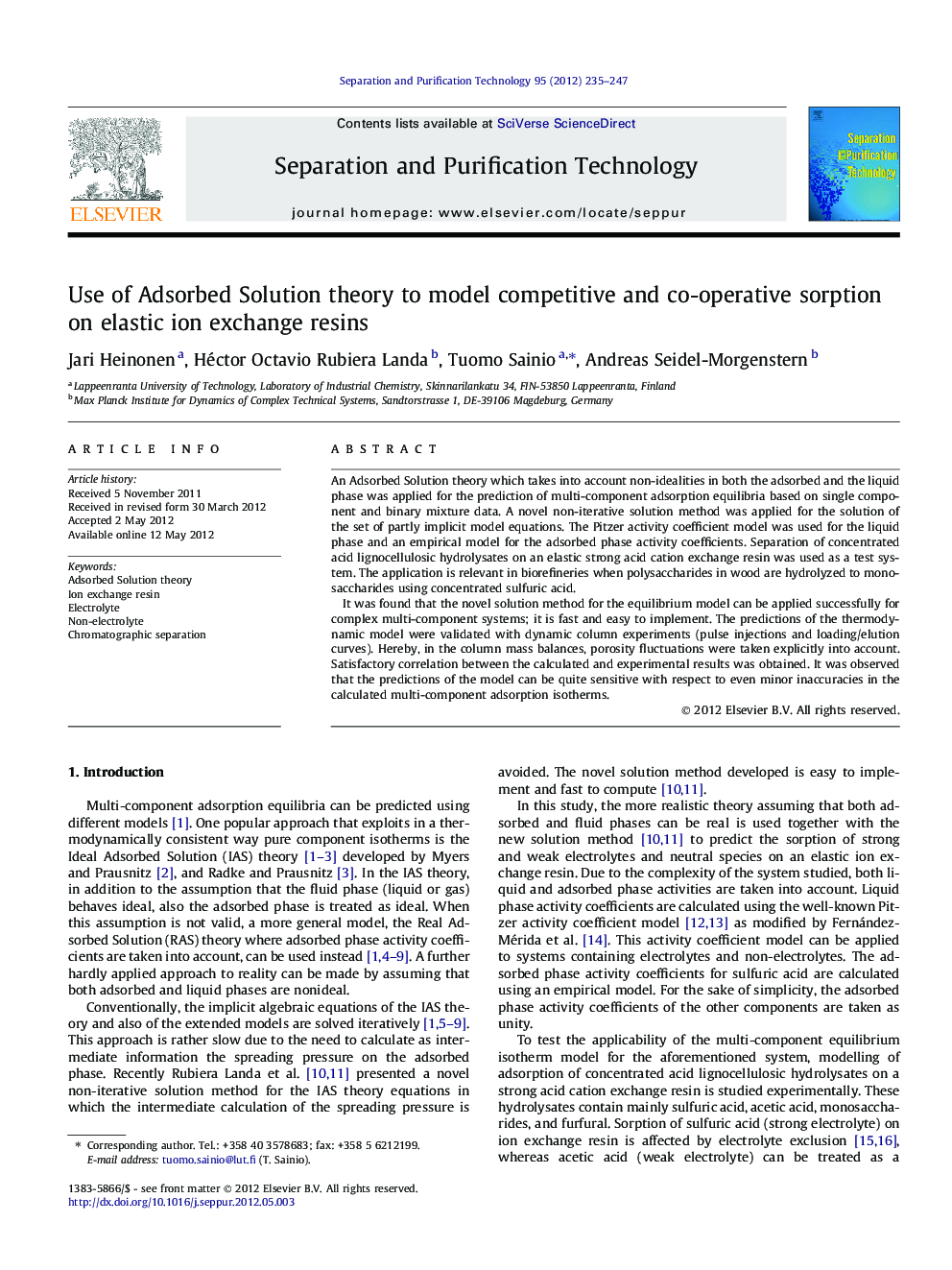| Article ID | Journal | Published Year | Pages | File Type |
|---|---|---|---|---|
| 642201 | Separation and Purification Technology | 2012 | 13 Pages |
An Adsorbed Solution theory which takes into account non-idealities in both the adsorbed and the liquid phase was applied for the prediction of multi-component adsorption equilibria based on single component and binary mixture data. A novel non-iterative solution method was applied for the solution of the set of partly implicit model equations. The Pitzer activity coefficient model was used for the liquid phase and an empirical model for the adsorbed phase activity coefficients. Separation of concentrated acid lignocellulosic hydrolysates on an elastic strong acid cation exchange resin was used as a test system. The application is relevant in biorefineries when polysaccharides in wood are hydrolyzed to monosaccharides using concentrated sulfuric acid.It was found that the novel solution method for the equilibrium model can be applied successfully for complex multi-component systems; it is fast and easy to implement. The predictions of the thermodynamic model were validated with dynamic column experiments (pulse injections and loading/elution curves). Hereby, in the column mass balances, porosity fluctuations were taken explicitly into account. Satisfactory correlation between the calculated and experimental results was obtained. It was observed that the predictions of the model can be quite sensitive with respect to even minor inaccuracies in the calculated multi-component adsorption isotherms.
► Modelling of competitive and co-operative sorption using the Adsorbed Solution theory. ► Explicit empirical adsorption isotherms for individual species. ► A novel solution method for equilibrium function found to be fast and easy to implement. ► The model predicts phase equilibrium and column dynamics with acceptable accuracy.
